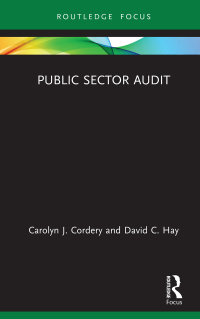Answered step by step
Verified Expert Solution
Question
1 Approved Answer
Purell Magazine Construction Fraud You are a newly hired fraud examiner. You have been asked to write a preliminary report on the scenario below, using
Purell Magazine Construction Fraud You are a newly hired fraud examiner. You have been asked to write a preliminary report on the scenario below, using the information presented in Units to and findings from your additional research.
Purell magazine and publishing house decided to outsource much of its directmail operations to specialized mail vendors. The company began converting its plant in Oakville, Ontario, from a directmailorder factory to an office complex. Part of the construction of the office complex involved building an auditorium that was identical to another auditorium in its European offices.
As a recently hired Auditor and fraud examiner, this is your third day on the job. In an effort to get to know your new company, you had scheduled a series of interviews with all the vice presidents. The first interview was with the vice president of administrative services, Richard Green, who oversaw many construction projects and maintenance services. Because of the massive renovation project, it was not unusual for hundreds of invoices to be forwarded to Green.
Coincidence one: You stopped by the accounts payable department and retrieved a series of recently submitted invoices for various trade expenses related to the auditorium construction project. One of the things you wanted to accomplish was to understand how the accounting codes workedwhat was capitalized, what was expensed, how it was recorded, etc. So you grabbed a stack of processed invoices with accounting codes and went to the construction site to meet with the vice president for an hourlong interview.
As the two of you walked around the grounds, you asked the vice president if he could explain the accounting codes to you: He stared at the top invoice for approximately seconds and said: That is not my signature on the invoice! As he looked through the stack, he found what appeared to be about three or four other forgeries. He was completely baffled.
The initial investigation revealed that all the forgeries were in the painting division, budgeted at approximately $ a year. The company employed only one person to oversee the painting operations in its facilities department: James Small. Small, a yearold from New Fairfield, Ontario, earned about $ a year.
It was his job to coordinate timeandmaterials contracts with the scores of painters, carpenters, electricians, and plumbers who toiled daily on the renovation, repair, and construction of the building complex. As facilities supervisor, Small regularly forwarded invoices to the vice president of administration services for approval. Small launched his scheme by crafting false invoices for the jobs done by the painters. He took a copy of a trade invoice from an existing painting contractor and, using his home computer, created a replica into which he would record slightly different hours for the trade contractors work.
A probable scenario of how Small executed his scheme. Lets say he knew that during the month of February, as an example, there were twentyseven painters on the grounds during the course of one week. Small also knew the total number of hours and the volume of materials used in that time. He would create invoices that were similar in nature but record only eleven painters on the grounds. Small would not reinvoice exactly the same work done during a week, but he would make it look so similar that no ones suspicions were ever aroused. Effectively, there were no work orders on the phantom work he created on these invoices. Small always listed fewer painters on the false invoice than the actual number who had worked that week, and he registered less time for their services than they had actually worked.
As part of his job, he regularly brought the trade invoices into the administrative VPs office for signature approval. After delivering a stack of these invoices, he would return to collect them within the next day or two and deliver the approved invoices to the accounts payable department. It was this opportunity that allowed this individual to go and collect the approved invoices and insert his own replicated fraudulent invoices as approved. This was the first piece of an electronic circuit that allowed him to commit the fraud.
The second piece of the circuit for the fraud to ignite, was allowing this same employee to transport the invoices to the accounts payable department, and ultimately to collect the cheque. After seeing how easy it was to slip in his own false invoices in the stack of approved ones, Small became bolder in his scheme. He began calling accounts payable, claiming that a carpenter or painter had arrived on the grounds and needed his cheque immediately To keep the project flowing, the employees in the accounts payable department accommodated him. Many employees knew and liked Small, who had worked for the company for nearly years.
Eventually, this routine became so familiar to employees in a
Step by Step Solution
There are 3 Steps involved in it
Step: 1

Get Instant Access to Expert-Tailored Solutions
See step-by-step solutions with expert insights and AI powered tools for academic success
Step: 2

Step: 3

Ace Your Homework with AI
Get the answers you need in no time with our AI-driven, step-by-step assistance
Get Started


